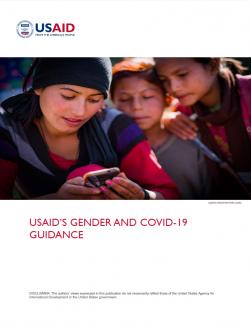The outbreak of COVID-19 has had—and will continue to have—a tremendous impact on countries worldwide until the pandemic is controlled through physical distancing, masking, frequent handwashing with soap and water, and equitable global distribution of COVID-19 vaccines. The effect of the pandemic on global public health, and individual and communal social and economic well-being, particularly for those who are vulnerable or marginalized, has been devastating. Since the start of the pandemic, impacts of COVID-19 have included reduced access to nutritious foods, severe disruptions in food supply chains, accelerated democratic backsliding, widened economic inequalities, accelerated aggravation of the global education crisis, and increased strain on water systems. These challenges will likely continue in the short to medium term. Also, COVID-19 will have long-term effects across a range of sectors in countries around the world, potentially countering development gains, including those related to gender equality, such as increasing women’s vulnerability to food insecurity and malnutrition, widening gender poverty gaps, increasing incidence of gender-based violence, exacerbating burdens of unpaid work, increasing exposure and risk of COVID-19 for frontline workers, hindering women’s access to sexual and reproductive health services, and intensifying forms of violence and discrimination.
Previous responses to global public health emergencies and pandemics (including Ebola, Zika, and severe acute respiratory syndrome [SARS]), along with the COVID-19 response to date, have made clear that integrating a commitment to gender equality and women’s empowerment in activity design and implementation is vital to supporting affected communities and saving lives. Within this context, it is critical to adapt programming to respond to how COVID-19 is affecting women and girls, men and boys of different ages, disabilities, ethnicities, races, and socio-economic and demographic groups. Further, such programming is an opportunity not only to mitigate the risks of backsliding on gender equality gains, and associated health and economic backsliding, but also to advance women’s leadership roles and opportunities.

